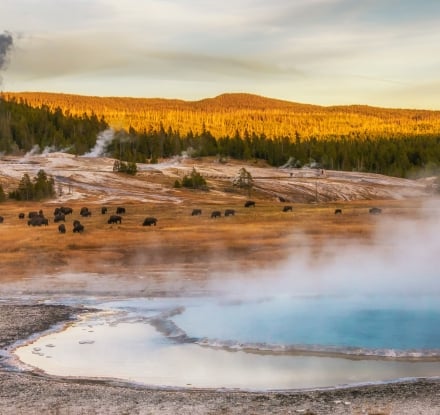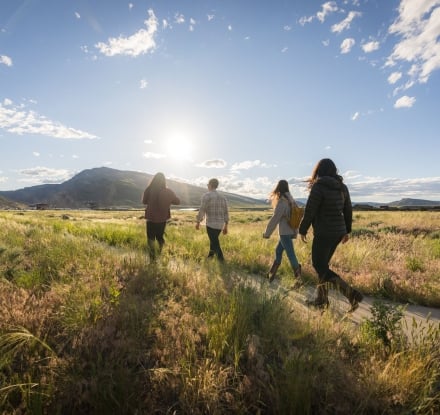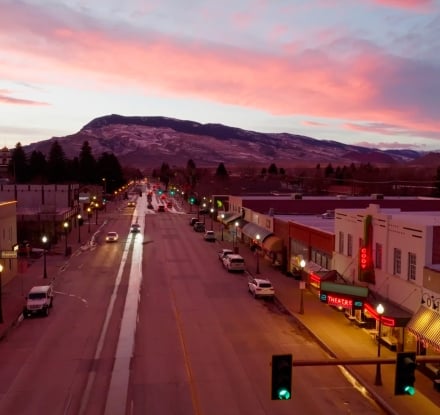
They’re Called Wildlife for a Reason
For the past few days it seems whenever I open the newspaper, turn on the tube or connect to the Web there is one story that keeps showing up. The good news is that it has nothing to do with the Kardashian clan.
What I keep seeing is a story and video clip of tourists who got too close to a bear sow and cubs on a bridge in Yellowstone National Park. Nobody was hurt, and the bears seem to be fine.
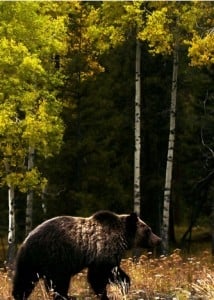
Bears in the wild are not Teddy Bears.
In the clip I see tourists with cameras getting too close to the bears, and the mama bear starts to run to round up the cubs. That action startles the tourists who then start to run back to their cars. Some of them scream which makes the situation seem even worse.
Around here we are pretty used to seeing wildlife, and we are well-versed in how to act in bear country. The worst position you can find yourself is to be caught between a mama bear and her cubs. It’s even worse than getting between me and a sale at the cowboy music store.
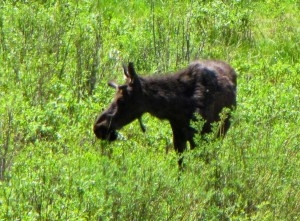
Even awkward moose appear tame in the wild.
And even though some species are very smart, they still can’t read road signs marking park boundaries. You are just as likely to see wildlife in the forests and valleys around Cody as you are inside Yellowstone National Park.
I would like to take this opportunity share some basic guidelines for observing wildlife, courtesy of our friends at the National Park Service in our very own Yellowstone:
Wildlife
Do not approach wildlife, no matter how tame or calm they appear. Always obey instructions from park staff on scene. You must stay at least 100 yards (91 m) away from bears and wolves and at least 25 yards (23 m) away from all other large animals – bison, elk, bighorn sheep, deer, moose, and coyotes.
Do not feed any animals. It harms them and it is illegal.
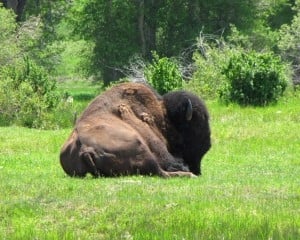
Bison may seem lazy and slow, but they’re not!
Bison
- Bison can sprint three times faster than humans can run.
- They are unpredictable and dangerous.
- Your best view may be from inside a hard-sided vehicle.
- Every year visitors are gored and some have been killed.
Bears
- Bears are dangerous. More information can be found on our bear safety page.
- Visitors are required to keep all food and garbage stored in a bear-proof manner.
- When viewing bears along roads, use pullouts and stay in your car.
- If you have a surprise encounter with a bear, do not run. Slowly back away.
- Carry bear spray and know how to use it.
- If you are injured by a bear (regardless of how minor), or if you observe bear or bear sign, report it to a park ranger as soon as possible. Someone’s safety may depend on it.
Wolves
Wolves are not normally a danger to humans, unless humans habituate them by providing them with food. No wolf has attacked a human in Yellowstone Country, but a few attacks have occurred in other places.
Like coyotes, wolves can quickly learn to associate campgrounds, picnic areas, and roads with food. This can lead to aggressive behavior toward humans.
What You Can Do
- Never feed a wolf or any other wildlife. Do not leave food or garbage outside unattended. Make sure the door is shut on a garbage can or dumpster after you deposit a bag of trash.
- Treat wolves with the same respect you give any other wild animal. If you see a wolf, do not approach it.
- Never leave small children unattended.
- If you have a dog, keep it leashed.
- If you are concerned about a wolf—it’s too close, not showing sufficient fear of humans, etc., do not run. Stop, stand tall, watch what the wolf is going to do. If it approaches, wave your arms, yell, flare your jacket, and if it continues, throw something at it or use bear pepper spray. Group up with other people, continue waving and yelling.
- Report the presence of wolves near developed areas or any wolf behaving strangely.
- We advise visitors not to handle wolf scat. Humans could possibly ingest Echinococcus granulosus eggs (the tapeworm responsible for Hydatid disease) from handling wolf scat.
To date, eight wolves in Yellowstone National Park have become habituated to humans. Biologists successfully conducted aversive conditioning on some of them to discourage being close to humans, but two have had to be killed.
Coyotes
- Coyotes quickly learn bad habits like roadside begging. This may lead to aggressive behavior toward humans. Never approach or feed a begging coyote.
Ravens
- Ravens have learned to unzip and unsnap packs. Do not allow them access to your food.
Most of these guidelines are common sense items, but it never hurts to look them over as a refresher.
Be smart, be aware and you will have a great time.
In the meantime, I am lovin’ life – and not keeping up with the Kardashians – in Cody, Wyo.


